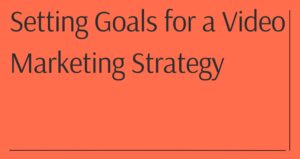In the world of entrepreneurship, online businesses are becoming increasingly popular. The rise of the internet and digital tools has made it easier than ever to start a business with minimal initial investment. From selling services to e-commerce, the online space offers endless opportunities for those with the right mindset, skills, and approach.
Building a successful online business isn’t a get-rich-quick scheme, but with careful planning, hard work, and persistence, anyone can make it happen. Whether you want to start a side hustle or launch a full-fledged company, the steps are largely the same. At this point in time, you’ll have a huge confusion about what business should I start to scale better. Nothing to worry you are going to get to know all this coming.
In this guide, we’ll explore how to start an online business step by step, focusing on selling services as a unique business model.
5 Steps on How to Start an Online Business to Get Started
Starting an online business has never been more accessible, with global e-commerce sales projected to hit $6,478 billion in 2029. Whether you’re looking to sell products, offer services, or monetize your expertise, this guide breaks down the essential steps to transform your digital business idea into reality.
Step 1: Think of a Great Service You Can Start
The first step in building a successful online business is identifying the right service to sell. This is the foundation of your business, and it’s important to choose a service that is not only something you’re skilled at but also one that people want and need. Your expertise can be a big advantage, but you also need to ensure there is demand for the service.
Identifying Your Skillset
Before diving into the world of online business, take a moment to think about your skills and strengths. Are you good at graphic design? Do you have experience in digital marketing, social media management, or web development? Perhaps you excel in a particular niche, such as offering fitness coaching or personal consulting. These are all viable services that can be sold online.
The key is to find a service that aligns with your passion and expertise, but also one that fills a gap in the market. Here are some examples of services you could offer:
- Web Design and Development: With businesses and individuals constantly looking to establish an online presence, web design is a high-demand service. If you have the skills, you can offer customized websites, e-commerce platforms, or even site maintenance.
- Graphic Design: If you’re creative and have a knack for visual design, offering graphic design services (logos, marketing materials, website graphics) could be a great option. High-quality visuals are essential for businesses looking to build their brand.
- Copywriting or Content Creation: Many businesses need high-quality written content for their websites, blogs, social media, and marketing campaigns. If you have strong writing skills, you can offer content writing, copywriting, or blog management services.
- Consulting or Coaching: Whether it’s business consulting, career coaching, or health coaching, online consulting services are in demand. If you have expertise in a particular field, you can offer one-on-one sessions, group coaching, or workshops.
Conduct Market Research
Once you’ve identified your service, it’s essential to conduct market research. This involves understanding your target audience, their pain points, and what they’re willing to pay for your service. Research can be done by looking at competitors, engaging in online forums, or even conducting surveys to gather insights.
You should also check if there’s an existing demand for your service and identify your competition. Doing this will give you an idea of what you’re up against, what works, and how you can differentiate yourself from others.
Step 2: Create a Platform to Sell Your Service
Now that you’ve identified your service, the next step is creating a platform where customers can learn about it and make purchases. A well-designed platform is essential for building trust with your audience and making your business look professional.
Building a Website
A website is a must for any online business. While there are other platforms like social media or third-party marketplaces, having your own website gives you full control over branding, customer experience, and marketing.
You don’t need to be a coding expert to get started. There are many website builders available that make it easy for beginners to create a professional-looking site. Some popular options include:
- WordPress: One of the most widely used website platforms, WordPress offers flexibility and customization options. It’s ideal if you plan to scale your business in the future.
- Wix: Known for its user-friendly drag-and-drop interface, Wix allows you to create a beautiful website quickly, with no coding required.
- Squarespace: This platform is perfect for creatives and offers stunning templates. Squarespace is also a good choice for those who want an easy-to-use platform with a focus on design.
Domain Name and Hosting
Once you’ve chosen a website platform, it’s time to select a domain name (your website’s URL). Your domain name should be easy to remember, relevant to your business, and ideally include a keyword that relates to your service.
For hosting, you’ll need to choose a reliable provider that ensures your website is up and running smoothly. Some hosting providers also offer domain registration services, which makes the process more straightforward.
Popular hosting options include:
- Bluehost: A popular choice for beginners, offering affordable hosting with easy WordPress integration.
- SiteGround: Known for excellent customer support and performance, SiteGround is great for businesses looking to scale.
- HostGator: Offers affordable hosting plans and is known for its reliability.
E-Commerce Integration
If you plan to sell digital products, services, or subscriptions, consider adding e-commerce functionality to your site. For service-based businesses, integrating booking tools, payment gateways, and invoicing systems will streamline the purchasing process for customers.
Some useful tools and integrations include:
- PayPal or Stripe for secure payment processing.
- Acuity Scheduling or Calendly for easy appointment bookings.
- Shopify or WooCommerce for e-commerce solutions.
Step 3: Make Your Service Look Good
Once your platform is set up, the next step is to ensure your service is presented in the best possible way. The more appealing your service appears, the more likely potential customers are to trust you and make a purchase.
Branding and Visual Design
Branding is crucial for setting your business apart from competitors and creating a professional identity. Consider the following elements when building your brand:
- Logo: A simple, memorable logo is a great way to create a recognizable identity.
- Colors and Fonts: Use consistent colors and fonts throughout your website, marketing materials, and social media to create a cohesive look.
- Images and Graphics: Use high-quality images and graphics that reflect the style and quality of your service.
Offering Value
To attract more customers, consider offering something of additional value to your audience. This could include:
- Free Resources: Offering free guides, templates, or webinars can help build trust with your audience and give them a taste of what you provide.
- Discounts or Promotions: Special offers, like a discount for first-time customers or seasonal promotions, can be enticing for potential buyers.
- Exclusive Content: Offer exclusive content or services to customers who sign up for your email list. This can help nurture relationships and encourage repeat business.
Step 4: Promote Your Online Business Service
To make your online business successful, you need to actively promote your services. Marketing plays a huge role in getting your name out there, building brand awareness, and driving sales.
Search Engine Optimization (SEO)
Search engine optimization (SEO) is a crucial aspect of marketing your service. Optimizing your website for search engines ensures that people can easily find your business when they search for keywords related to your services.
Some key SEO strategies include:
- Keyword Research: Find keywords that people are searching for related to your service. Use tools like Google Keyword Planner or SEMrush to identify high-traffic keywords.
- On-page SEO: Optimize your website’s content, meta tags, headers, and images to improve your site’s search rankings.
- Blogging: Regularly post blog articles that provide valuable information related to your service. Blog content can help attract organic traffic and position you as an authority in your niche.
Social Media Marketing
Social media platforms such as Facebook, Instagram, Twitter, and LinkedIn are powerful tools for reaching your target audience. Create profiles on the platforms that are most relevant to your service and regularly share content to engage your audience.
You can also run paid ads on social media to increase visibility and drive traffic to your website. Be sure to target your ads based on demographic factors such as age, location, interests, and behaviors.
Email Marketing
Email marketing is one of the most effective ways to nurture relationships with potential customers and encourage repeat business. Build an email list by offering a freebie (such as an eBook or checklist) in exchange for visitors’ email addresses. You can then send regular newsletters, updates, and exclusive offers to keep your audience engaged.
Paid Advertising
In addition to organic marketing, paid advertising (Google Ads, Facebook Ads, etc.) can help boost your visibility and bring in customers faster. Be sure to target the right audience and monitor your ad performance to ensure you’re getting a good return on investment.
Step 5: Streamline Payment and Delivery
Making the purchasing process as simple as possible is crucial for converting visitors into customers. Ensure your website is set up with secure, easy-to-use payment options.
Payment Solutions
Integrate trusted payment gateways such as PayPal, Stripe, or Square to process transactions securely. Offering multiple payment methods (credit cards, digital wallets, etc.) can also increase your sales by accommodating various customer preferences.
Service Delivery
If you’re selling a service that requires appointment booking or consultation, integrate an online scheduling tool like Acuity or Calendly. These tools allow customers to book their appointments and pay upfront, saving you time and ensuring you stay organized.
For digital products, ensure that the delivery process is seamless. Use tools like SendOwl, Payhip, Podia, and Gumroad to sell eBooks, courses, or other digital products online automatically after a purchase is made.
Conclusion
Starting an online business is an exciting and rewarding venture. Whether you want to sell web design services, coaching, or any other service, following these steps can help you create a successful and sustainable business. It takes time, effort, and dedication, but with the right strategies in place, you can turn your passion and expertise into a profitable online service business.
Remember, the key is to start with a service that you’re passionate about and that meets a demand. Then, build a professional platform, promote your services, and offer value to your audience. With persistence and continuous effort, you’ll be well on your way to running a thriving online business.






1 thought on “How to Start an Online Business? A Step-by-Step Realistic Guide”
Hello team,
This post was exactly what I needed to read today as I was searching one research that can help me to start an online business. Your words have provided me with much-needed clarity and reassurance. Thanks for sharing this piece. Awaiting more posts similar.